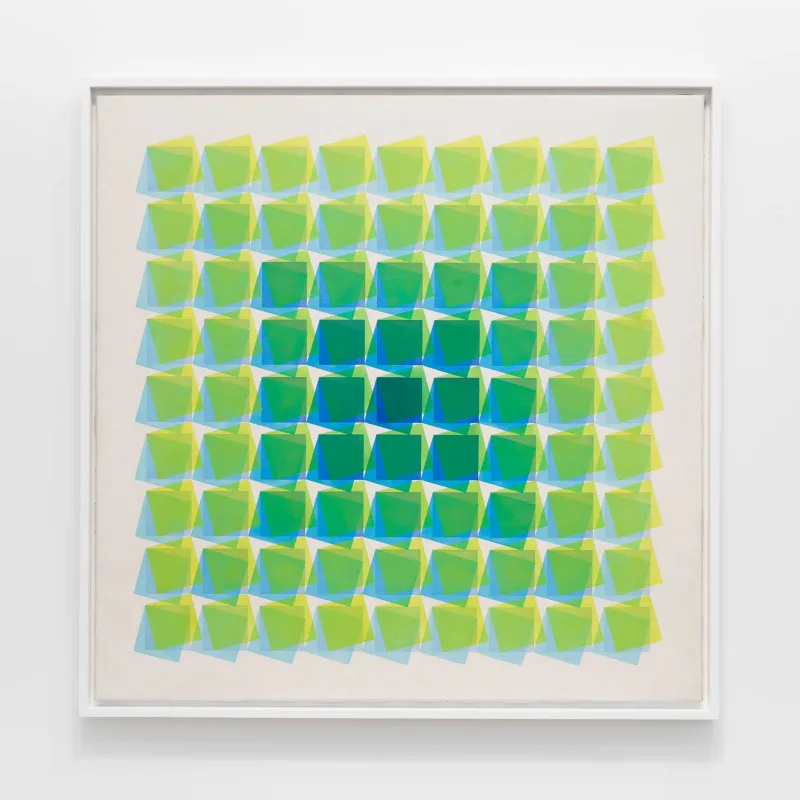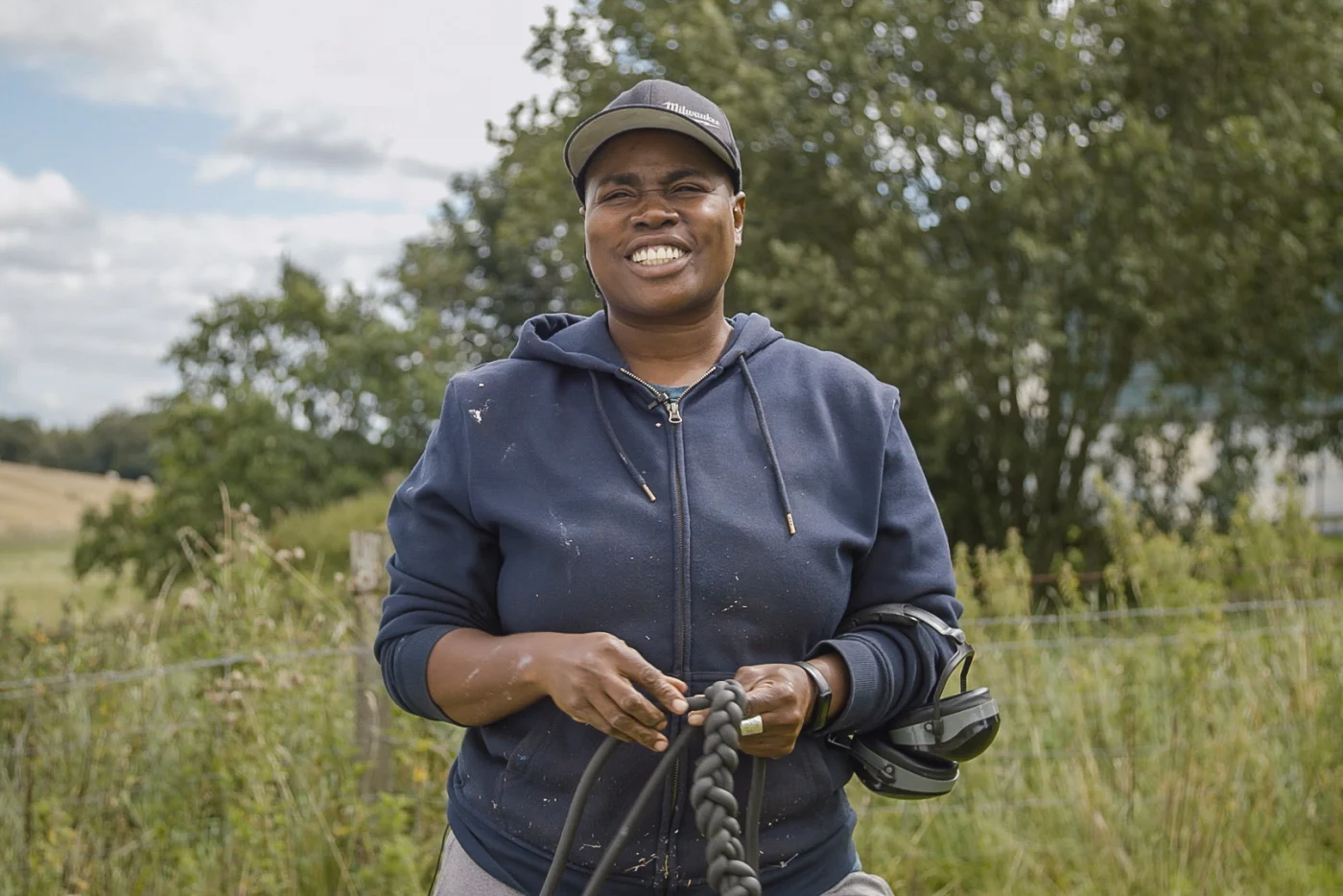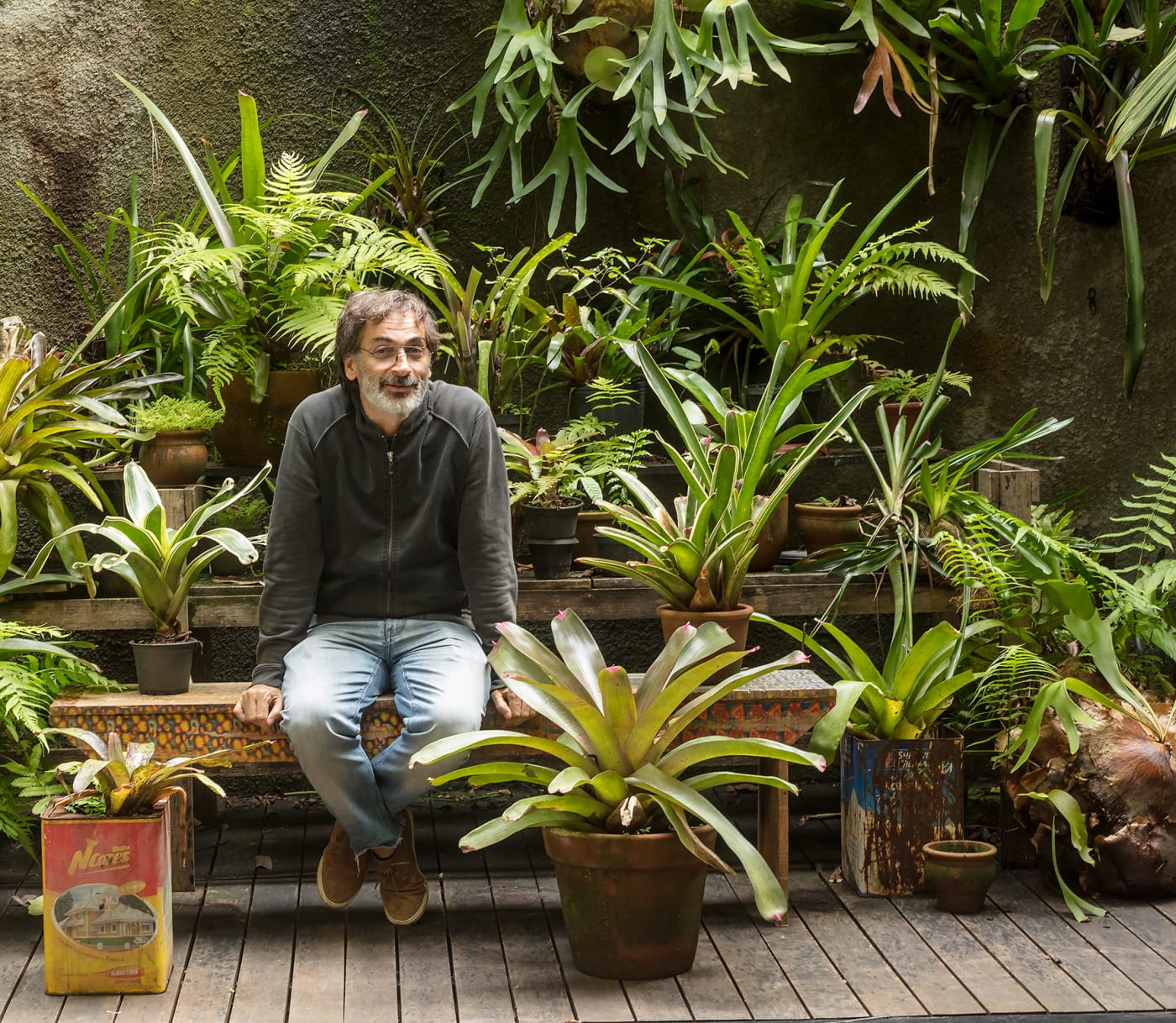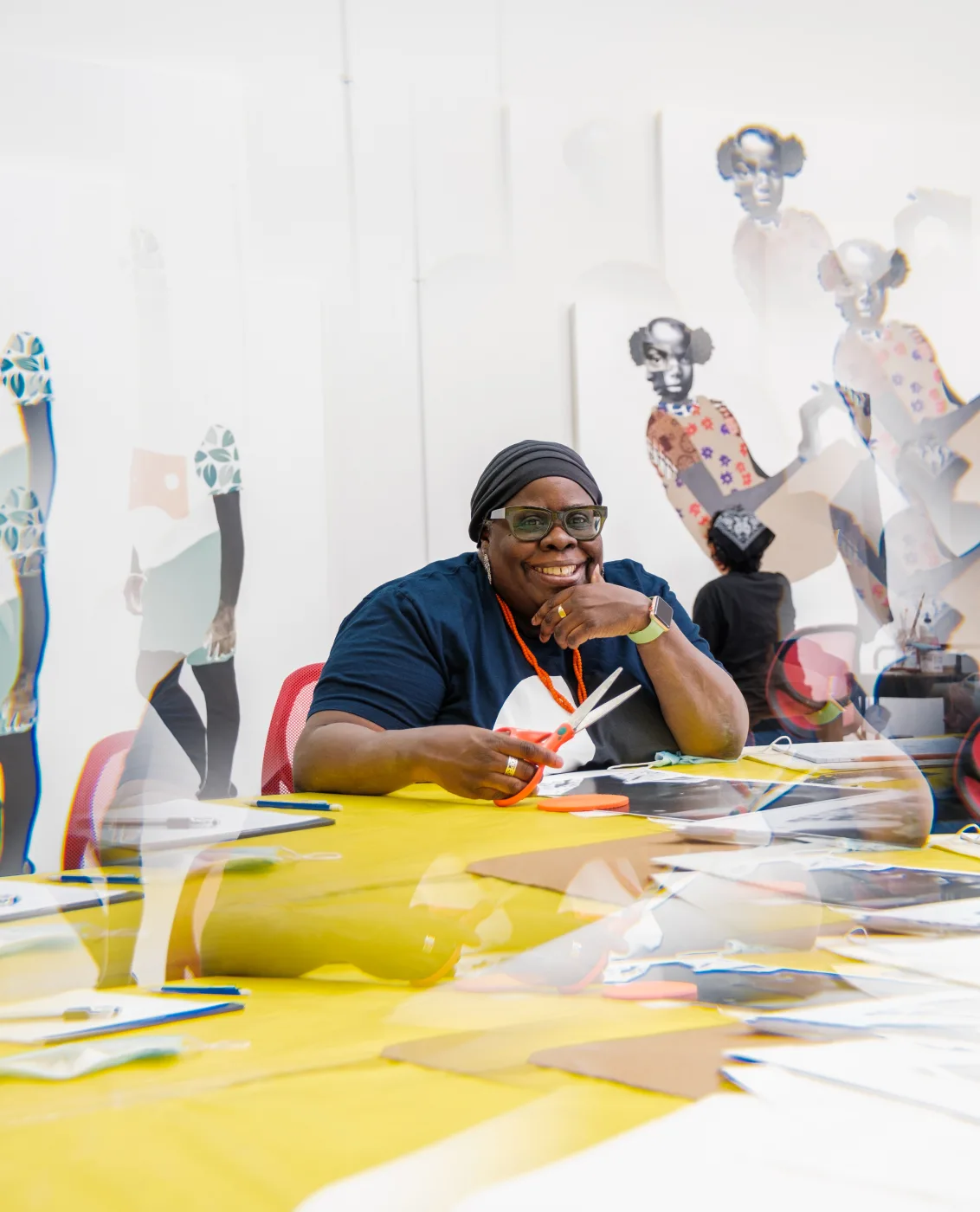
Art Basel
Overview
For Art Basel’s second Online Viewing Room, Stephen Friedman Gallery presents a selection of artists including Marina Adams, Mamma Andersson, Juan Araujo, Leilah Babirye, Jonathan Baldock, Lisa Brice, Andreas Eriksson, Manuel Espinosa, Denzil Forrester, Channing Hansen, Jim Hodges, Deborah Roberts, Yinka Shonibare CBE, Kehinde Wiley and Luiz Zerbini.
Highlights include a new painting by Mamma Andersson featuring a lone figure standing before a brooding, melancholic landscape; a large new painting on paper by Deborah Roberts exploring the vulnerability of a young African-American girl; a new large-scale female portrait by Kehinde Wiley from his solo show at William Morris Gallery in London, his first exhibition at a UK institution; a monumental new painting by Luiz Zerbini combining geometric forms with lush, tropical flora, the artist’s largest work on canvas to date; and a selection of new works by recent additions to the roster, Marina Adams and Leilah Babirye.
For Art Basel’s second Online Viewing Room, Stephen Friedman Gallery presents a selection of artists including Marina Adams, Mamma Andersson, Juan Araujo, Leilah Babirye, Jonathan Baldock, Lisa Brice, Andreas Eriksson, Manuel Espinosa, Denzil Forrester, Channing Hansen, Jim Hodges, Deborah Roberts, Yinka Shonibare CBE, Kehinde Wiley and Luiz Zerbini.
Highlights include a new painting by Mamma Andersson featuring a lone figure standing before a brooding, melancholic landscape; a large new painting on paper by Deborah Roberts exploring the vulnerability of a young African-American girl; a new large-scale female portrait by Kehinde Wiley from his solo show at William Morris Gallery in London, his first exhibition at a UK institution; a monumental new painting by Luiz Zerbini combining geometric forms with lush, tropical flora, the artist’s largest work on canvas to date; and a selection of new works by recent additions to the roster, Marina Adams and Leilah Babirye.
Highlights
Expansive in scale, Marina Adams’ work explores colour, form and movement in unabashed fashion. Inspired by textile design, architecture and postmodern poetry, Adams’ paintings feature vibrantly-coloured shapes arranged in abstract configurations. As is evident in the new work on display, ‘Three Watches of the Night’, the synchronicities and oppositions between these forms generate a striking dynamism. Adams sketches out her compositions with charcoal before she begins to allow for experimentation whilst working; drips of paint and gestural brushstrokes break up vast expanses of colour on the canvas to reveal the artist’s touch. Adams states, “I work in charcoal to get a sense of scale, of line and shape on the canvas. This frees me, so when I begin painting, there’s already a space there; a space that I can get involved with in a direct way. And that frees the touch as well.” The artist will have a solo exhibition at Modern Art Museum of Fort Worth in autumn 2020 and her first solo exhibition at Stephen Friedman Gallery will open in early 2021.
Inspired by filmic imagery, theatre sets, and period interiors, Swedish artist Mamma Andersson‘s compositions are dreamlike and expressive. While stylistic references include turn-of-the-century Nordic figurative painting, folk art and local or contemporary vernacular, her evocative use of pictorial space and juxtapositions of thick paint and textured washes are uniquely her own. Her subject matter revolves around melancholic landscapes and nondescript, private interiors. Andersson’s new painting ‘Figure’ captures a lone wanderer standing before an ominous, brooding sky. The protagonist wears tall riding boots and a jacket featuring an indecipherable symbol sewn onto the back in thick, gold brocade. Otherworldly in quality, Andersson leaves the scene entirely open to interpretation by denying the viewer any form of narrative or visual clue.
Ugandan artist Leilah Babirye’s multidisciplinary practice transforms everyday materials into objects that address issues surrounding identity, sexuality and human rights. Composed of debris collected from the streets of New York, Babirye’s sculptures are woven, whittled, welded, burned and burnished. Babirye’s choice to use discarded materials in her work is intentional – the pejorative term for a gay person in the Luganda language is ‘ebisiyaga’, meaning sugarcane husk. “It’s rubbish,” explains Babirye, “the part of the sugarcane you throw out.” A new sculpture exhibited in the OVR demonstrates how the artist frequently uses traditional African masks to explore the diversity of LGBTQI identities, assembling them from ceramics, metal and hand-carved wood; lustrous, painterly glazes are juxtaposed with chiselled, roughly-textured woodwork and metal objects associated with the art of blacksmithing. Babirye will have her first solo exhibition at Stephen Friedman Gallery in early 2021.
South African artist Lisa Brice creates seductive, provocative paintings that contest the historically misogynistic nature of figuration, typically painted by white men for white men. In these new works on paper, Brice interrogates the male gaze by portraying the female figure from the perspective of a woman artist. Each painting features a female subject, rendered in the artist’s characteristic cobalt blue. In one work the figure’s face is glimpsed only as a reflection in a mirror in which she defiantly returns our gaze. Grasping a painter’s palette in one hand, this figure occupies the unconventional position of both artist and sitter. The other subject’s casual pose suggests that she is aware of being looked at, a cigarette balanced between the fingers of one hand and the other placed nonchalantly on her hip. Visible brushstrokes invite the viewer to linger on the subject's reflection before being drawn back to her direct gaze, which seems – unsettlingly – to be assessing our own. Brice has a forthcoming solo exhibition at GEM, The Hague in November 2020.
Combining collage with mixed media, Deborah Roberts' figurative works depict the complexity of black subjecthood and explore themes of race, identity and gender politics. Roberts' use of collage reflects the challenges encountered by young black children as they strive to build their identity, particularly as they respond to preconceived social constructs perpetuated by the black community, the white gaze and visual culture at large. Roberts’ new collage ‘What else can I do’, one of her largest works on paper to date, features a young adolescent African-American girl with two pairs of arms; one with hands raised in the air in an act of surrender, and the other with her limbs and palms outstretched as if pleading with the viewer. In recent works, Roberts has constructed images of fictional black boys and girls between the ages of 9 and 12, who take on poses of strength and power, while at the same time showing vulnerability and ambiguity. Roberts will have a major solo exhibition of new works at The Contemporary Austin, Texas, USA in January 2021.
‘Portrait of Savannah Essah’ is a new oval painting by American artist Kehinde Wiley from his solo show at William Morris Gallery in London, his first exhibition at a UK institution. Wiley met Savannah Essah on the streets of Dalston, East London when he was casting for the exhibition. In the portrait Wiley portrays Essah in a confident pose with one hand resting on her chest and the other on one hip. Viewed from below, she gazes directly at the viewer from a lavishly patterned background. Here Wiley employs the heroic visual vocabulary of traditional portraiture to depict the subject as an emblem of strength within a society of complicated social networks. Wiley is renowned for his finely detailed portraits of contemporary men and women, as well as global figures such as former US President Barack Obama.
Combining geometric forms with tropical flora, Luiz Zerbini’s monumental painting 'Happiness Beyond Paradise’ is the artist’s largest work on canvas to date. Inspired by the Atlantic and Amazon rainforests, this painting conveys the immersive and seductive quality of the Brazilian landscape. Its title emerged from Zerbini’s conversations with Italian philosopher Emanuele Coccia. Describing plants as the “most subtle artisans of our cosmos,” Coccia’s work centres on the fundamental role of plants in sustaining our atmosphere. Juxtaposing abstract shapes and lush flora, this painting reflects Zerbini’s ongoing interest in the relationship between nature and humanity in and around Rio de Janeiro. “I think it’s a reflection of the place I live,” he explains. “Rio de Janeiro has a huge forest just inside of the city. Everything is mixed. It’s an urban landscape, but it’s really full of nature.” Zerbini will have his second solo exhibition with the gallery in November 2020.
Contact us:
Sales: sales@stephenfriedman.com.
General enquiries: info@stephenfriedman.com.
Press: Carlotta Dennis-Lovaglio at carlotta@scott-andco.com.
Social media:
Facebook: /Stephen-Friedman-Gallery
Instagram: @stephenfriedmangallery
Twitter: @SFGalleryLondon


























